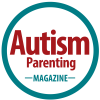-
About
- About Listly
- Community & Support
- Howto
- Chrome Extension
- Bookmarklet
- WordPress Plugin
- Listly Premium
- Privacy
- Terms
- DMCA Copyright
- © 2010-2025 Boomy Labs

Listly by Autism Parenting Magazine
Chantal Sicile-Kira, “The Autism Advocate,” describes SPD as “a neurological disorder that causes difficulties with processing information from the five senses: vision, auditory, touch, olfaction, and taste, as well as from the sense of movement (vestibular system), and/or the positional sense (proprioception).
Download our FREE guide at:
https://www.autismparentingmagazine.com/weighted-blankets-reducing-anxiety-providing-good-sleep/
Source: https://www.autismparentingmagazine.com/weighted-blankets-reducing-anxiety-providing-good-sleep/

Many children with an autism spectrum disorder (ASD) struggle with sensory issues including sensory processing disorder (SPD). Chantal Sicile-Kira, “The Autism Advocate,” describes SPD as “a neurological disorder that causes difficulties with processing information from the five senses: vision, auditory, touch, olfaction, and taste, as well as from the sense of movement (vestibular system), and/or the positional sense (proprioception). For those with SPD, sensory information is sensed, but perceived abnormally. Unlike blindness or deafness, sensory information is received by people with SPD; the difference is that information is processed by the brain in an unusual way that causes distress, discomfort, and confusion.” (Sicile-Kira, 2010)

Touch is the first sensation that starts evolving in the womb at five weeks. The early development of the touch (tactile) system provides an essential foundation for emerging social and communicative behaviors (Cascio, 2010).

Taking a child to the dentist can be a very stressful experience for both parents and children. For children with autism spectrum disorder (ASD) or other developmental disabilities who have difficulties with sensory stimuli, communication, and increased levels of anxiety, the stress is even greater. From the time spent in the waiting room combined with new sounds and smells, to close interaction with dentists and dental equipment, stress levels can reach an all-time high.

Sleep problems are common in typically developing children, but can be particularly prevalent in children with Asperger’s and Autism Spectrum Disorders (ASD).

Finding “just the right gift” for a child with autism spectrum disorder (ASD) is not always a simple task. Due to the various sensitivities and needs that many children with autism may have, it’s important to carefully consider what kinds of gifts are a good fit.

For children with autism spectrum disorder (ASD), head banging is a common way to self-soothe and communicate needs. Both neurotypical and autistic babies and toddlers seek to recreate the rhythm that stimulated their vestibular system while in utero. Other rhythmic habits that fuel a child’s kinesthetic drive include head rolling, body rocking, biting, and thumb sucking. According to Dr. Harvey Karp MD, rhythmic habits trigger the calming reflex in infants and toddlers. Many babies begin head banging around six months of age, but neurotypical children usually will not continue the behavior after the age of three.

Children with autism spectrum disorder (ASD) may have issues effectively processing sensory information and may perceive sensation differently. For example, a child may perceive touch sensation as painful or immediately become startled when touched. Some children are extremely sensitive to noises such as the sound of a toilet flushing. A child’s sensory needs and way of processing sensory information from their surrounding environment is completely different for each child. Helping a child with sensory- related issues always needs to be done with an individualized approach because each child is unique and experiences something different. However, there are some general strategies and activities that are calming and helpful. For example, deep pressure (the feeling of a hug or being compressed/ held tightly) can be very calming and organizing. It’s the same reason why swaddling a baby can help him/her sleep or stop crying.

I am asked time and time again what items we use for our son with autism to make his life and our lives easier. So, here is a breakdown of the things that he (or we) couldn’t live without.

I learned almost 30 years ago that my extremely fussy baby grew calmer when cocooned tightly inside my arms as we swayed side to side. Back then, I had not yet heard about his neurologically-based disorder known as Asperger’s syndrome (part of the autism spectrum), which is associated with sensory sensitivities and social and communication challenges. However, as an occupational therapist, I already understood how atypical responses to sensations impacted learning and motor development, specifically fine-motor abilities to touch, grasp, and manipulate objects.

Insomnia (sleeplessness) is quite common among all age groups due to lifestyle changes and associated stressors, which also leads to anxiety depression, burn-out, and stress. Stress can cause complicated physiological changes such as increased blood pressure, heart rate, metabolic changes, or indigestion.
